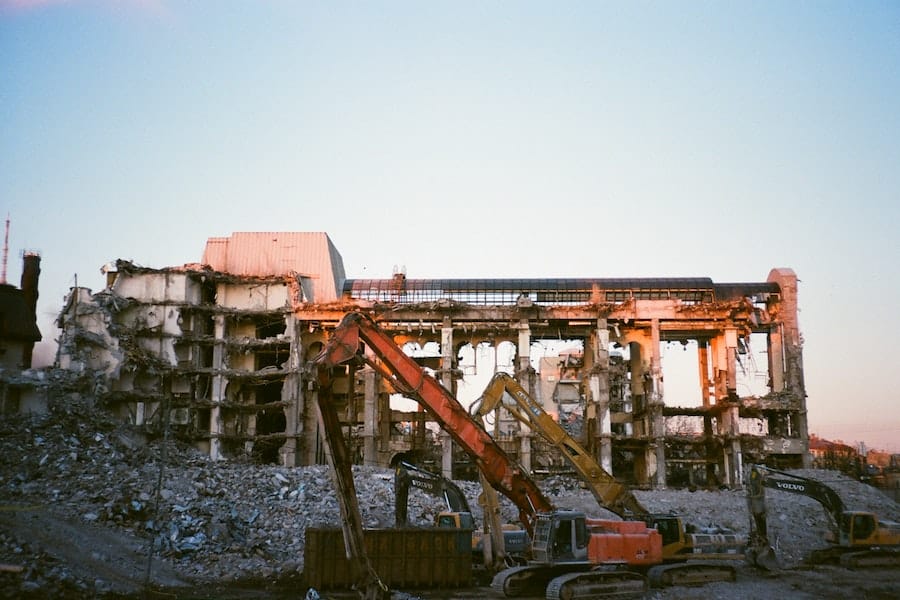7 Tips For Guaranteeing An Efficient Demolition
Share
Demolition projects encompass the dismantling or destruction of various structures, such as buildings, bridges, or other infrastructure. These endeavors, regardless of scale, necessitate meticulous planning and execution to guarantee safety, efficiency, and minimal environmental impact. This ultimate guide delves into indispensable tips that will help you carry out a successful demolition project while prioritizing safety, effectiveness, and sustainability.
1. Comprehensive Project Planning And Assessment
A thorough planning and assessment phase is crucial before commencing any demolition work. This involves:
- Conducting extensive research on the structure to be demolished, its materials, history, and potential hazards.
- Conducting research to decide on the right tools for the job, ie. you should utilize skid steers with concrete breakers to demolish thick concrete structures.
- Preparing a detailed site analysis, including site access, neighboring properties, utilities, and environmental factors.
- Assembling a multidisciplinary team of professionals, including architects, engineers, and environmental consultants, to assist with planning and assessment.
- Developing a project timeline that considers potential delays, such as inclement weather, unforeseen complications, and regulatory approval processes.
- Creating contingency plans to address unexpected challenges and minimize project delays.
2. Selecting The Appropriate Demolition Method
Several demolition methods exist, each with its advantages and limitations. Some common methods include:
- Implosion
- Selective Demolition
- Mechanical Demolition
- High-Reach Demolition
- Robotic Demolition: This method employs remote-controlled robots to perform precision demolition tasks, often in confined spaces or hazardous environments. Robotic demolition enhances worker safety and can improve efficiency.
3. Ensuring Worker Safety And Regulatory Compliance
Worker safety and regulatory compliance are paramount during demolition projects. Some measures to prioritize safety include:
- Conducting regular safety meetings and briefings to discuss potential hazards, best practices, and lessons learned from previous projects.
- Monitoring air quality and noise levels to ensure compliance with local regulations and minimize disruption to neighboring properties.
- Establishing a robust emergency response plan, including first aid provisions, evacuation procedures, and communication protocols.
- Implementing a system for reporting and investigating incidents, accidents, and near-misses to identify root causes and implement corrective actions.
4. Efficient Debris Management And Waste Reduction
Debris disposal and waste reduction strategies are crucial for minimizing environmental impact and optimizing project efficiency. Some tips for efficient debris management include:
- Establishing designated waste storage areas for different waste types, such as hazardous materials, recyclables, and general debris.
- Implementing a systematic deconstruction process to facilitate the separation and recovery of valuable materials.
- Utilizing crushing, grinding, or screening equipment to process and repurpose salvaged materials on-site.
- Tracking and reporting waste generation and recycling rates to measure progress toward sustainability goals.
5. Hiring Experienced Professionals And Contractors
Demolition projects can be complex, high-risk endeavors. Hiring experienced professionals can ensure proper planning, execution, and compliance with safety regulations. When selecting a demolition contractor, consider the following:
- Seeking recommendations from industry peers, local authorities, or online reviews.
- Evaluating potential contractors based on their safety records, environmental stewardship, and community engagement.
- Requesting detailed proposals outlining the contractors’ approaches, methodologies, and anticipated timeline.
- Establishing clear performance expectations and contractual obligations to ensure project success.
6. Embracing Technology And Innovation
The use of technology and innovative techniques can improve the efficiency, safety, and sustainability of demolition projects. Consider incorporating the following:
- Utilizing advanced demolition equipment, such as remote-controlled machines or specialized attachments, can enhance precision and safety.
- Implementing Building Information Modeling (BIM) or Geographic Information Systems (GIS) can aid in project planning, visualization, and coordination.
- Leveraging drone technology for site assessment, monitoring, and documentation can improve data accuracy and minimize risks associated with manual inspections.
- Incorporating real-time monitoring systems, such as vibration monitors or air quality sensors, to track site conditions and ensure regulatory compliance.
7. Engaging Stakeholders And Addressing Community Concerns
Effective communication and stakeholder engagement are essential components of any successful demolition project. Consider the following strategies:
- Developing a communication plan that outlines the project’s goals, timelines, and potential impacts on the community.
- Hosting public meetings or information sessions to present project details, answer questions, and address concerns.
- Establishing open lines of communication with local authorities, emergency services, utility providers, and neighboring property owners.
- Providing regular project updates through various channels, such as social media, email newsletters, or community bulletin boards.
Conclusion
A successful demolition project requires comprehensive planning, selecting the appropriate demolition method, prioritizing worker safety, efficient debris management, and partnering with experienced professionals. By following the tips outlined in this ultimate guide, you can ensure the safe, efficient, and sustainable completion of your demolition project while minimizing risks, maximizing productivity, and reducing environmental impact. Additionally, embracing technology and innovative techniques, along with engaging stakeholders and addressing community concerns, can further enhance the safety and effectiveness of your project.
















